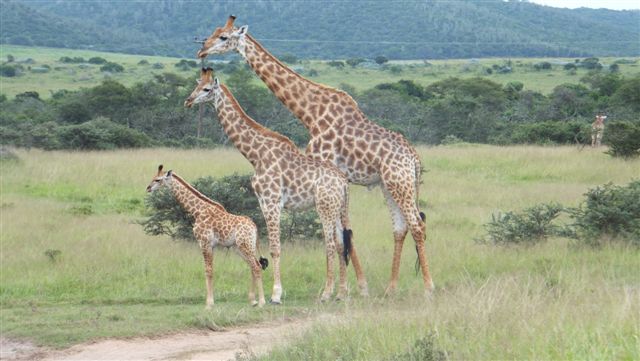
Conservation Updates
 If you're coming to Kariega Game Reserve on safari and would like to know more about rhino poaching and rhino conservation, our rangers are all knowledgeable on the topic and are happy to help with any questions you may have. You can also head down to the Curio Shop at Main Lodge for a range of rhino merchandise on sale with proceeds to rhino conservation.
If you're coming to Kariega Game Reserve on safari and would like to know more about rhino poaching and rhino conservation, our rangers are all knowledgeable on the topic and are happy to help with any questions you may have. You can also head down to the Curio Shop at Main Lodge for a range of rhino merchandise on sale with proceeds to rhino conservation.
Curio shop at Kariega
 Interesting results of research regarding contraception in free-ranging populations of African elephants, including at Kariega Game Reserve.
Interesting results of research regarding contraception in free-ranging populations of African elephants, including at Kariega Game Reserve.
Contraception of African elephants
 Kariega Game Reserve Conservation Volunteers honoured National Arbor Week this week by planting the 'miracle tree of the century' - Spekboom - and working on eradicating some alien invasive tree species.
Kariega Game Reserve Conservation Volunteers honoured National Arbor Week this week by planting the 'miracle tree of the century' - Spekboom - and working on eradicating some alien invasive tree species.
Arbor Week 2013 at Kariega

Research: impact of elephants in Eastern Cape reserves
 On Wednesday, the Kariega Volunteers teamed up with Rooting-for-Rhino and the Kingsley Holgate Foundation to bring the Children's Rhino Art Project to Farmerfield School. The Children's Rhino Art Project is a drive to raise awareness of rhino poaching amoung the youth, aiming to reach 200 000 children before World Rhino Day on the 22 September 2013.
On Wednesday, the Kariega Volunteers teamed up with Rooting-for-Rhino and the Kingsley Holgate Foundation to bring the Children's Rhino Art Project to Farmerfield School. The Children's Rhino Art Project is a drive to raise awareness of rhino poaching amoung the youth, aiming to reach 200 000 children before World Rhino Day on the 22 September 2013.
Children's Rhino Art Project comes to the Eastern Cape
 My Rhino is an anti-poaching awareness and fundraising initiative that sells beautifully crafted ceramic rhino's with a portion of the proceeds going to the Kariega Foundation Save the Rhino fund. To date, My Rhino has raised R35 000 for the Foundation, and they were also recently part of the St Stithians Girls Prep 'My Rhino Project" which raised over R11 000 for the Kariega Foundation.
My Rhino is an anti-poaching awareness and fundraising initiative that sells beautifully crafted ceramic rhino's with a portion of the proceeds going to the Kariega Foundation Save the Rhino fund. To date, My Rhino has raised R35 000 for the Foundation, and they were also recently part of the St Stithians Girls Prep 'My Rhino Project" which raised over R11 000 for the Kariega Foundation.
My Rhino - ceramic rhinos sell for rhino conservation
 We are sharing the "Birds in Reserves" project booklet to further assist the volunteers (and all readers) to gain insights into our many species of indigenous birds.
We are sharing the "Birds in Reserves" project booklet to further assist the volunteers (and all readers) to gain insights into our many species of indigenous birds.
Research: Birds in Reserves project

Research: diet and ecological role of giraffe
 The Kariega Conservation Volunteers assist the wildlife management team on the reserve with numerous conservation projects, including elephant research. We are sharing this article to further assist the volunteers to gain insights into wildlife management.
The Kariega Conservation Volunteers assist the wildlife management team on the reserve with numerous conservation projects, including elephant research. We are sharing this article to further assist the volunteers to gain insights into wildlife management.









